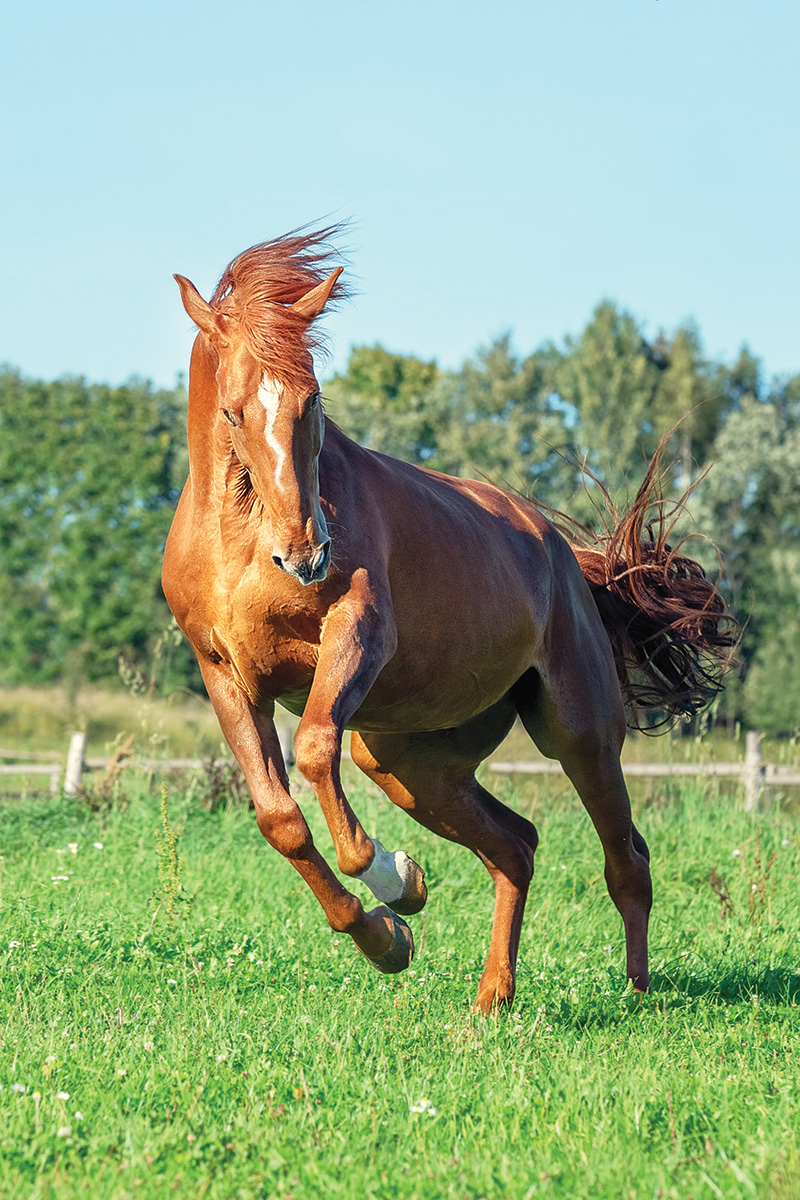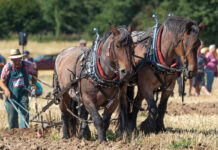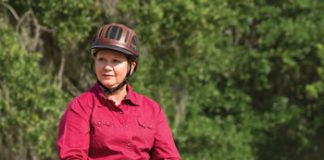I took a deep breath, put my stethoscope on, and slowly reached out a hand to a skinny sorrel mare with a crooked blaze who waited in the restraint chutes. She wasn’t handleable, but I’d hoped that I could at least complete an exam and vaccinate her. She tensed as I touched her neck, then lashed out violently with her hind feet multiple times, striking the heavy walls of the chutes again and again.

The loud crashing and the sounds of steel panels shuddering and groaning as they took the beating overwhelmed my senses. It seemed like there was nothing else in the world at that moment except the mare fighting violently and the horrible noise and vibration.
No. 9054
It seemed to go on for hours, although it was only a few minutes before the she stopped. My heart was pounding as the mare quieted, flanks heaving, her hind leg scraped and bleeding. A wise horse trainer once told me that humans tend to take on the horse’s anxiety and stress, and a tough training session was emotionally exhausting. At that point, I knew exactly what he meant.
Scott, a trainer, stood nearby. The mare watched him warily, exhaling rattling snorts. Scott spoke to her softly, but that was enough to send her into another frenzy of crashing and fighting.
When she quieted again, he shook his head, and we opened the chute and let her go. We had 11 more horses to vaccinate and examine, and it was clear we weren’t going to get No. 9054 vaccinated today.
Trying to Fit In
While none of the other horses were what I would call cooperative, I could at least listen to their hearts and lungs and check their teeth. We were even able to get halters on several of them. The starving herd had been abandoned, so law enforcement brought them to the ranch. We had a large pen with two shelters, fresh hay and water waiting for them.
When the last horse was trotting away from the chutes, I looked for No. 9054. I had trouble picking her out at first, because in my mind, she was huge and terrifying. It was a shock to see an average-sized red horse eating quietly from one of the feeders, a distinctive zig-zag blaze on her face. We named her Stella.
After a period of recovery, Stella was moved into a pen in a busy area where she’d be exposed to the daily hustle of the ranch. There were other horses around her, but each had their own space.
Stella retreated to the far end of her pen whenever someone approached, always exhaling sharp snorts at us. Horses only make this rattling sound when highly alarmed, but it seemed to be Stella’s resting state of existence. The barn workers had to move her into the alley before entering her pen because she’d knocked one of them to the ground.
A Difficult Decision
Scott continued working with Stella, but after five weeks, he had yet to touch her. He would open a series of gates and move her from the small pen to the round pen. Stella never once acknowledged him, and she ran in endless circles around the pen seeking an escape route. She left the sessions a sweating, shaking mess, and it took her hours to calm down.
On week six, Scott tried to get a rope around her neck, and she struck at him violently, giving him a black eye and tearing a rip down the front of his shirt.
There had to be a consensus among the trainers before final decisions were made about any horse, and two other trainers tried to work with Stella, but she injured them both. Whatever had happened to her had scarred her beyond repair, and it was likely that she was going to maim or kill someone.
We all wished there were a financially secure sanctuary for her with a guarantee that she would not be accidentally bred or able to hurt someone else, but such a place did not exist.
I euthanized her early the next morning, and as she sank to the ground peacefully, many of us wiped away tears. It was slightly comforting to know that she would no longer be stressed and terrified, but it was still a tough one. The trainers and staff stroked her face and neck, and we all sat with her until it was over.
New Life
I was putting away my equipment and blowing my nose when my phone rang. Another mare on the ranch was foaling, and I needed to go right away. I grabbed the foaling kit from a nearby shelf, hastily washed my hands, hopped into a nearby golf cart with two trainers, and sped down the driveway.
The pregnant mare was on her side breathing heavily, an amniotic sac visible under her tail. I could see the shape of two feet and a nose, and as the mare strained, the foal gradually emerged. There was no need for me to intervene, and soon the baby was out.
One of the trainers pointed and said, “Look at that! She looks exactly like Stella!”
Sure enough, the little sorrel filly had a crooked white blaze zigzagging down her little face. We named her in honor of the mare that we had just laid to rest and watched in delight as she lurched to her feet and nursed for the first time.
When a new trailer load of emaciated horses arrived a few hours later, their pen was ready, the feeders stuffed with fragrant green hay, and the waterers scrubbed and shining. Little Stella and her mother frolicked in the distance as we unloaded the new arrivals and began their assessments.
This edition of Vet Adventures appeared in the January/February 2023 issue of Horse Illustrated magazine. Click here to subscribe!





